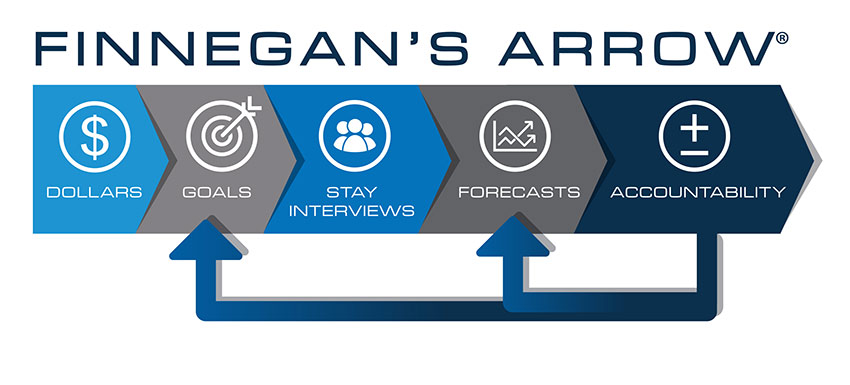AI, deportations, tariffs, and birthrate declines are reshaping America's workforce—blue- and white-collar alike. From baby boomer exits to AI disruptions, breaking down the workforce challenges no leader can afford to ignore.
The Right Way Vs Wrong Way to Do Stay Interviews

Stay Interviews have been built on science, on knowledge regarding how leaders should build employee retention and engagement. And turnover decreases by 30% and more when delivered correctly as part of our proven process.
Last week I had three separate meetings with organizations that said they had conducted Stay Interviews but turnover and engagement had remained the same…no improvement. I learned next, though, that the Stay Interviews they had implemented were not the proven approach with Stay Interviews that we provide to our clients…and not a form of Stay Interviews that is based on research.
Consulting firms globally are also claiming Stay Interview expertise…yet their product offering misses out on several components that become difference-makers to engaging and retaining their client companies’ teams. Here are just three of the main ways these organizations go astray:
- Someone other than first-line leaders conducts the Stay Interviews: Many companies succumb to the generalized notion that supervisors are too busy to conduct Stay Interviews so HR does them instead. And a few consulting firms will come onboard to interview your employees, too, if you invite them. The deep pothole caused by this approach is the #1 reason leaders conduct Stay Interviews is to build trust…so removing them from conducting the interview sidesteps the most important reason to implementing Stay Interviews at all.
The outcome of someone other than the supervisor conducting the Stay Interviews is likely a report, detailing what employees like and dislike with a few recommendations at the end. In other words, a survey, just delivered face-to-face. And the resulting recommendations of one-size-fits-all programs will do nothing to help leaders on any level build trust with the individuals who comprise their teams.
The other logic gap with this approach is usually the reason supervisors lack time is because they are busy filling jobs, training new hires, and cleaning up after their mistakes. Investing leader time in Stay Interviews reduces all of these problems, making service for your customers or patients much, much better.
2. Supervisors ask too many questions: Many of you know our Stay Interview approach is just five questions developed via research that produced questions that yield the very best results from employees to improve engagement and retention. Yet companies and consultants provide long question lists which they believe are comprehensive…when the negative outcome is leaders are cramming in every question rather than probing to learn more about subjects that employees indicate are important to them.
Consider a supervisor’s reaction if an employee discloses deep concerns regarding work/life balance, describing spending evenings at the computer while his family plays games and watches TV. A short, carefully-scripted Stay Interview question list provides opportunity to probe deeply to identify causes of too much work and more, whereas a supervisor with a long question list might glance at his watch and ask for suggestions on how he might help…which is a weak response that doesn’t build trust
3. Supervisors are not trained on skills: Conducting Stay Interviews effectively requires asking our researched questions, listening, probing, and taking notes. We all know good listeners and bad ones, and the good ones remind us with their skills that listening is a very distant relative of hearing. But while genuine listening is certainly an advanced skill, responding with probes based on that listening requires even more skill sophistication. And those probes are the trust-builders because they demonstrate real care.
Listening and probing are critical skills for building trust…which is the genesis reason for conducting Stay Interviews at all. Consider a current or past supervisor who could focus on your words, listen carefully, repeat what you said, and then develop questions to explore more deeply the concern you just expressed. Did that supervisor build trust with you? And can you imagine your supervisors doing the same with no training at all? Many companies are asking their supervisors to conduct Stay Interviews with zero training, just distributing questions and telling them to begin.
These are just three of the ways Stay Interviews have been designed to be implemented, versus their mutant forms that take the blame for no engagement or retention improvement.
Many of you know that we would never suggest Stay Interviews be introduced without surrounding them with what we refer to as “business-driven processes”…converting turnover to dollars, establishing retention goals for leaders, and training leaders to forecast how long employees will stay. This invention which we refer to as Finnegan’s Arrow provides the comprehensive solution that consistently cuts turnover by 30% and more.

It would be easy to conclude by saying “Accept no imitators”. The greater message, though, is to disbelieve anyone’s words about Stay Interviews’ ineffectiveness before asking them whether they are implementing Stay Interviews in the ways in which have proven to cut turnover by 30% and more.
You can trust my words here. I invented the name, concept, and details of Stay Interviews with two books beginning in 2012. Delivering Stay Interviews via Finnegan’s Arrow is the absolute best, most scientifically-developed pathway to improving employee retention and engagement. And yes, please accept no imitators for your own sake and that of your employees.
Our Comprehensive Turnover Solution is designed to get results for companies like yours by cutting turnover 30% and more and implementing Stay Interviews the right way is key to this. Write me or connect with me if you want to learn more…DFinnegan@C-SuiteAnalytics.com.



